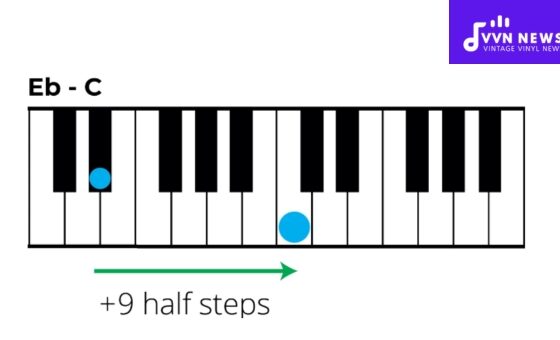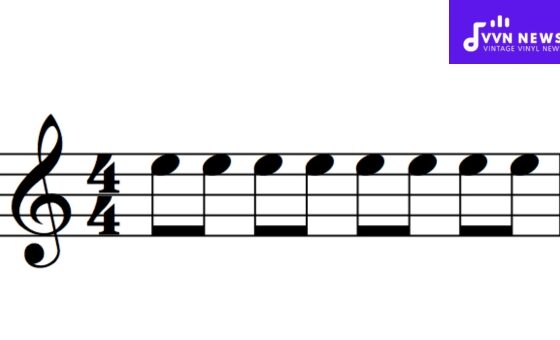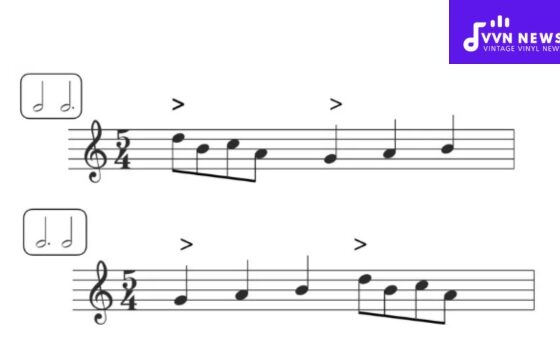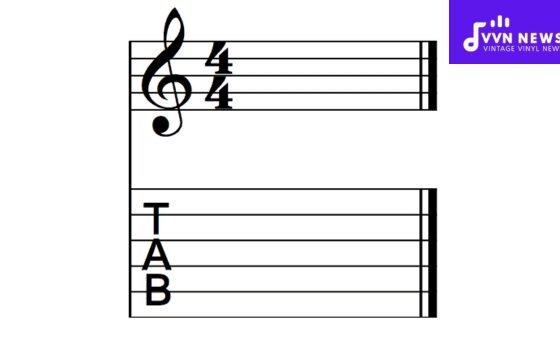The magic of music can truly be felt when all elements harmoniously blend, especially when it comes to something as soulful and pivotal as the vocals.
I believe the true essence of any song lies majorly within its vocals, providing a canvas for emotional expression and connecting with the listeners on a profound level.
Hence, I realized how crucial it is to understand how to mix vocals just right.
Delving deep, mixing vocals is an art that marries technical knowledge with creativity.
It’s about balancing these elements seamlessly to enhance the listening experience.
Ideally, mixing seeks to ensure that the vocals resonate distinctly yet harmoniously within the overall soundscape of the track.
With this post, I’m eager to demystify some of this complexity for you all looking to perfect your vocal mixes. Let’s get started!
What is Vocal Mixing?
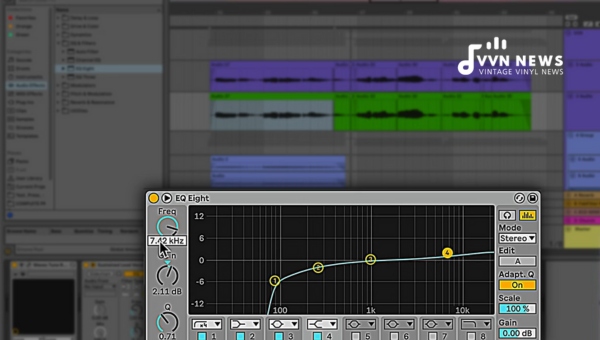
Vocal mixing is an integral stage in the music production process. It manipulates and enhances the raw recorded vocals to make them sound fuller, clearer and well-integrated within a track.
It involves correcting any errors in pitch or timing, reducing unwanted noise or sibilance, adjusting the tone with equalization (EQ), applying compression to control dynamic range, spicing it up with reverbs or delays for ambiance, and finally adjusting volume automation for a truly splendid mix.
When done carefully and creatively, it enhances the listener’s experience by making the vocals more engaging and emotionally powerful.
In essence, vocal mixing breathes life into the raw vocal takes and makes them shine to their full potential within your mix.
The Importance of Proper Vocal Mixing in Music Production

Proper vocal mixing holds paramount importance in the world of music production.
Being the core tenet of a song, vocals weave the melody and act as a medium to convey the track’s emotions, stories, and moods.
Thus, well-mixed vocals can cater to providing a sonic experience that is immersive and memorable.
Sonic Clarity and Balance
The most pivotal benefit of meticulous vocal mixing is achieving sonic clarity.
A well-defined vocal that cuts through the mix can capture the listener’s attention effectively while ensuring that every word and phrase is audibly transparent.
Besides, decent vocal mixing aims to balance the vocals and other elements in the mix without dominating or receding parts.
Also Read: Sibilance & Plosives In Your Vocals [Fix With These Easy Steps]
Professionalism and High-Quality Output
Proper vocal mixing substantially adds to your track’s overall professionalism. It differentiates an amateur-sounding way from one that exudes high-quality sound, setting you aside as a refined music producer in this competitive industry.
Emotional Impact
A well-mixed vocal can emotionally connect with your audience on a deeper level.
When applied appropriately, techniques like volume automation, reverberation, equalization, etc., can emphasize specific words or parts of the track that hold significant emotional content.
Proper vocal mixing does require time, patience, and practice, but trust me, it’s worth investing your energies into considering the profound impact it can make on your finalized tracks.
How To Mix Vocals?

Properly mixing vocals involves numerous steps, from recording high-quality song takes to the perfect composite track. Here’s how you can go about it.
Capturing Top-Quality Vocal Takes
Good vocal mixing starts at the source – the actual recording of the vocals.
Before you start thinking about mixing, you want to ensure you’ve captured the best vocal performance possible. This includes providing that:
- The vocalist is in good form and well-rehearsed. They should be comfortable and familiar with the material to deliver a natural performance.
- You use a good-quality microphone that suits your vocalist’s voice and appropriately captures their tonal qualities.
- The spot you choose for recording has minimal background noise. An adequately treated room will help eliminate unwanted reflections or echoey sounds.
- You’ve done your best to optimize microphone placement, distance, and angle regarding the vocalist for capturing an optimal tone.
Also Read: 25 Best Dynamic Microphones For Vocals & More In 2025
Crafting the Ultimate Composite Track
Once you have several high-quality takes, it’s time to craft them into a composite track, also known as “comping.” Initially, this involves:
- Listening critically – Go through each and take note-by-note or phrase-by-phrase. Listen carefully for both technical precision and emotional delivery.
- Selecting the best sections – Identify which phrases sound best from each take. Pay close attention to intonation, timing, energy levels, and overall performance.
- Creating a composite take – Now, stitch together all these selected bits to create one cohesive vocal track that feels like it was performed in one perfect take.
This process requires a keen ear, analytical listening skills, precise editing tools, and patience.
Remember that comping is subjective; what sounds good to you may not appeal to someone else as much.
However, rest assured that carefully crafting your composite track will lay an excellent groundwork for vocal mixing.
Precision in Pitch and Timing
The harmonious musical composition requires precision both in pitch and timing.
Pitch Correction: With sophisticated software nowadays, correcting minor pitch issues is easier than ever.
Such tools let you gently nudge off-key notes toward the correct pitch. But remember, overdoing this can suck the life out of your vocals, leaving them sounding unauthentic and robotic.
Use such tools judiciously to preserve the natural expressiveness of the performance.
Timing Adjustment: Similarly, use software tools to align your vocals perfectly with the rhythm of your track.
If a vocal phrase feels rushed or lagging, these tools allow you to stretch or compress part of the waveform without affecting its pitch.
However, like pitch correction, avoiding overdoing timing adjustments is vital to maintain a natural feel.
Also Read: 14 Best Vocal Microphones [Upgrade Your Singing Gear In 2025]
Taming Unwanted Noise with a Gate
Mixing involves dealing with all unwanted noise – from breath sounds between phrases to random clicks or pops. This is where Noise Gates can be our saviors.
A gate works by silencing audio that falls below a set threshold volume level, effectively reducing unwanted noise during “silent” parts of your track without affecting louder passages.
However, using a gate requires finesse – setting it too aggressively may cut off quieter vocal parts; setting it too leniently may leave too much noise. So, care must be taken when adjusting settings like threshold volume, attack time (how quickly the gate opens), release time (how slowly it closes), and hold time (how long it stays open).
Mastering Gain Control and Automation
Gain control helps you independently adjust or set an optimal baseline volume for each track in your mix before additional processing (like EQ or compression) is applied.
Proper gain staging ensures that every instrument and vocal track sits at the appropriate volume level compared to each other and that none are so loud that they cause distortion or clipping during mixing or mastering.
Conversely, automation is a powerful tool that allows dynamic volume control across different song sections.
It allows volume changes to be precisely programmed over time, whether to highlight specific phrases, balance out loud and quiet passages, or create dramatic dynamics.
Optimal Gain Staging for Full Impact
Optimal gain staging is about providing sufficient headroom in your mix for full-bodied sound while avoiding digital clipping.
It’s all about making sure each element in your mix can be heard clearly and accurately without distortion.
Remember to begin with the loudest parts of the mix (the climax or choruses), keeping those at a reasonable level.
This way, you ensure enough room exists to adjust volumes upward whenever necessary − such as during quieter verses − thereby preserving your track’s overall dynamic range.
Sculpting Vocal Tone with Equalization
Equalization (EQ) is one of the most influential processes in vocal mixing.
Essentially, EQ lets you balance the tonal characteristics of your vocal track by either augmenting or attenuating specific frequency ranges, allowing the vocals to sit better within your mix.
Understand the Frequency Spectrum – Human hearing ranges from 20 Hz to 20 kHz. For vocals:
- Frequencies below 100 Hz mainly constitute a ‘rumble’ and can usually be cut.
- The 100 Hz to 300 Hz range represents the ‘body’ of the voice.
- The area around 3 kHz relates to vocal presence & clarity.
- Any frequency region above 6 kHz contributes to vocal air and brightness.
How to Sculpt Tone with EQ –
- Cut Before Boosting: Scan for problematic frequencies that hamper your vocals. Once found, attenuate them using narrow ‘cuts.’ Removing undesirable elements often leads to a cleaner sound than consistently applying boosts.
- Complementarity: Think about how your vocals fit into the context of the entire mix. Sculpt your vowels so they aren’t colliding with essential elements in other instruments.
- Tweak Width (Q): Adjusting Q allows you to pinpoint problems or enhance specific frequencies. A broader Q is more musical and less surgical than a narrow Q.
Also Read: 25 Tips For Recording And Mixing Vocals In 2025
Combatting Sibilance with De-Essing
Sibilance refers to excessive emphasis on ‘s’ and ‘t’ sounds in the vocal recording, which can cause harshness in your mix when overly exaggerated; that’s where de-users come in handy.
De-Lessing essentially ‘compresses’ only those problematic sibilant frequencies rather than affecting the whole signal, helping considerably soften these sharp sounds without causing noticeable alterations in tone.
Using a De-esser – Most De-essers work similarly. First, identify the troublesome sibilant frequencies (typically around 5–10 kHz), then set an appropriate threshold and ratio to start compressing when these frequencies become too dominant in the mix.
Harnessing the Power of Vocal Compression
Compression is another critical tool in vocal mixing. It primarily balances your vocal dynamics so that louder parts get toned down and softer parts elevated, leading to a more consistent sound that cuts through the mix better.
Tips for Vocal Compression –
- Be Subtle: Over-compressing may lead to an unnatural and lifeless vocal sound.
- Fast Attack & Release: A more immediate attack time tames loud spikes faster, but beware—it could also kill vocal transients.
- Parallel Compression: Try blending your compressed signal with uncompressed vocals for more natural dynamics with a thickened tonality.
Adding Character with Saturation and Limiting
Saturation adds harmonics to your vocals, resulting in warmth and character, while limiting ensures your vocal levels don’t surpass a certain threshold—maintaining desired loudness without causing clipping or distortion.
For saturation, various plugins each impart a unique harmonic coloration.
Experiment with tube saturation, tape simulation, or even overdrive plugins until you find what resonates best with your vocals.
For limiting, subtly introduce it only if peaks are still aggressive post-compression. It’s all about providing that final layer of protection for your mastered songs against overloading.
Expanding the Soundstage with Reverb and Delay
Reverb creates a sense of dimension and space around your vocals.
It emulates how sound behaves in a physical space, providing an aura that allows your songs to ‘breathe.’ Choosing the right reverb involves:
- Understanding Room Type – Rooms such as halls or chambers create different reverb characteristics. It’s crucial to select something that fits the vibe of the track.
- Manipulating Decay Time – This determines how long the reverb lasts. Longer decay times might suggest bigger rooms, but be careful; too much decay can cloud the mix.
- Balancing Wet/Dry Mix – A more ‘wet’ signal will give more reverb; you must find a balance that enhances without overshadowing the main vocal.
Delay, on the other hand, reproduces direct sounds after a short period. It can proffer rhythmic texture and depth to your soundstage, making vocals bigger and broader.
Usefully, many Digital Audio Workstations (DAWs) offer in-built delay plug-ins with customizable parameters like delay time, feedback (how many times the delayed sound is repeated), wet/dry mix, etc., giving you room for creative experiments.
Also Read: 25 Tips For Recording Vocals Like A Pro [2025 Guide]
Creating Vocal Space within the Mix
Every element in your song needs its frequency space to shine and not clash with each other.
Equalization is vital here in ensuring each instrument occupies its unique sonic territory.
- Beware of Low-End Frequencies: Consider rolling off anything below 100Hz for more precise vocals.
- Sculpt Midrange: Human voice majorly resides here; brilliant sculpting helps vocals cut through.
- Tweak High-End: Boost or cut for desired presence and sibilance control.
Giving each track its pan position will also open up ‘space’ in your mix and avoid a cluttered soundstage.
Dynamic Volume Automation Across the Mix
Volume automation is your weapon for controlling the dynamic shifts in your vocals.
Even after compressing, some vocal parts may poke out or seem buried. Automating volume changes gives you precise control over every syllable and phrase.
Emphasize specific phrases, soften overly loud notes, or subtly boost softer parts.
Experiment with various rides until you strike a balance where everything flows smoothly without distracting jumps or dips.
Weaving in Background Vocals and Harmonies
Background vocals and harmonies provide depth, interest, and richness to the main vocal line.
They should enhance, not distract, so treating them differently than lead vocals is crucial.
- Push Them Back: Use more reverb/delay to make BGVs sit behind the lead.
- Create Lateral Spread: Pan them away from the center to alleviate frequency competition.
- Consider Thinner EQ: Roll off more top/bottom end to create that sense of ‘distance’.
FAQs About Vocal Mixing
What is the key to successful vocal mixing?
The key to successful vocal mixing is applying technical precision and creative insight to enhance the overall quality of the vocals within a mix.
Can anyone learn how to mix vocals?
Absolutely yes! With patience, practice, and time to learn about sound theory and audio processing tools, anyone can learn how to mix vocals.
How influential are the vocals in a song?
Vocals play a central role in a song because they carry the lyrics; this is often where listeners connect emotionally with the music.
Does it matter what type of microphone I use for recording vocals?
Yes, different microphones capture sound differently. You should select a microphone that suits your vocalist’s voice and captures their tonal qualities well for optimal results.
How important is background noise during vocal recording?
Minimizing background noise during vocal recording is crucial as it ensures clear articulation of lyrics. A noisy environment can interrupt recording quality.
Conclusion
Mixing vocals is genuinely an art form, combining creative perseverance and technical precision.
A solid understanding of all these factors can pave the way to the perfect vocal mix you dream about.
So whether you’re just dipping your toes into music production or looking to increase your knowledge, remember that adequate vocal mixing is about more than just manipulating controls—it’s about enhancing the emotional impact of a song.
Take time, learn and experiment with different tools and techniques, and trust your ears.




